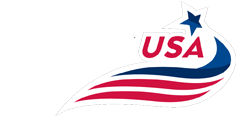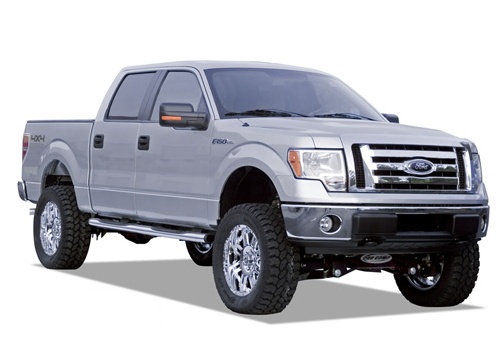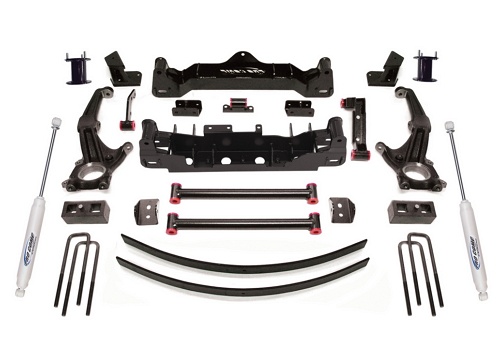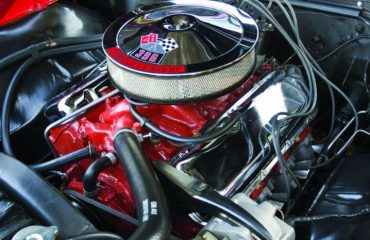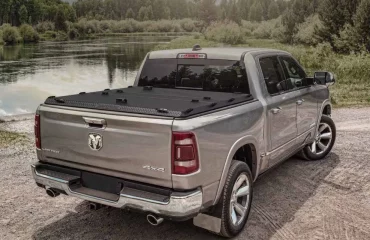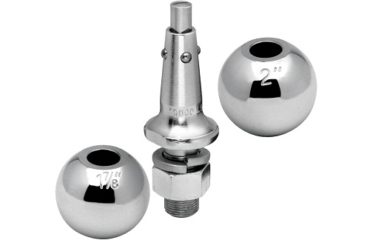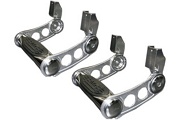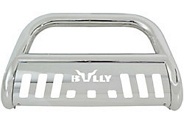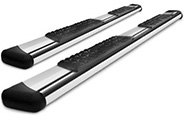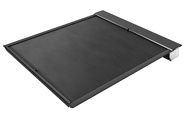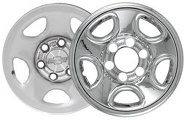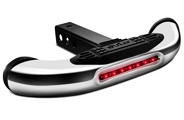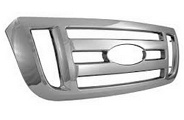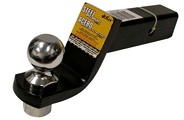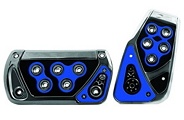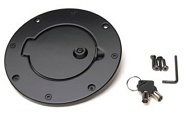The Ford F-150 is a regarded as a light-duty model within the Ford F-Series lineup of medium- and full-size pickup trucks. The vehicle is rugged and dependable and has been designed, produced, and marketed by the FoMoCo beginning in 1975 until present time. The Ford F-150 is already in its thirteenth generation of being manufactured. The pickup truck is widely reputed for being able to take on the most serious jobs, while showing superb towing capabilities and outstanding all-around performance.
Products are available — click below to view them!
SEE DETAILS ON EBAYA raised truck can certainly give off the right stance, and you do want that stance for it, because it will have the spirit of power, perspective, and of course, of towering above almost any other vehicle or a car just about anywhere, from city streets to interstate highways. A 6-inch lift kit by Pro Comp will give your Ford F-150 a considerable ground clearance, which will come in handy when you are going to engage in mudding off-road and tooling around, although the apogee of the issue itself boils down to size. The bigger – the better, you see, you already known it, and everyone else around you too.
Installing a suspension lift kit isn’t necessarily easy, although we’ll tell you how to install it very thoroughly. Keep on hand a pickle fork set, a hammer, or a suitable tie rod / ball joint separator tool; and certainly you will benefit from having a hoist or a jack. This job will demand from you to take your truck’s wheels off, you will have to deal with rusty bolts, springs, and hardware, hammer at hardened joints, and use plenty of assembly grease. When you are going to be done, however, your truck will ride up high, with that variety of normal-size and low-rider concerns no longer yours to worry about.
You see, you will be able to look back at everything you did and say, “I did it. I’ve made my pickup truck this way!” The feelings of pride and joy alone will most definitely pay for all of your efforts, while at the same time you will be able to save lots of time and cash by taking the mechanic out of the equation. In order for you to perform this installation, you will need a wide array of tools. Wrenches, screwdrivers, mallets, grinders, air tools, to name but a few. The step by step instruction that we offer will give you some clear ideas about the whole process, albeit as with most automotive jobs, certain individual aspects will have opportunities and challenges unique only to it.
- Begin your lift kit installation with the vehicle’s front end. Disassemble the entire front-end suspension. It will include the braking system, spindle, strut assembly, tie-rod end, sway bar, and the lower control arm. Before removing any of the bolts, soak them in penetrating oil. It’s important that before removing the factory knuckle, you remove the braking backing plate so as to access the ABS wheel speed sensor. Next, remove the axle nut, tie-rod end, sway bar, and link. Unbolt the three bolts holding the actuator to the knuckle, the lower ball-joint nut, and the upper ball joint, lower strut bolts, upper strut bolts, and last, the lower control arm. Then remove the sway bar from the vehicle completely.
- Next we will remove the front differential. To do that, you need to disconnect the front shaft, already marked with its relative position, so that you could reinstall it the same way to avoid future vibrations. Remove the front crossmember, then lower the entire front differential out. There are three bolts holding the front differential to the vehicle, use a breaker bar and a series of extensions take them off, although someone helping with an extra set of hands or a hydraulic jack will be of great help.
- Now that the differential is off, we can begin removing the driver’s side control arm pocket off. Pro Comp is very clear in their instructions to measure 2 & 11/16th” from the top of the cam bolt opening, and mark it with a white mechanical marker, then begin cutting, and then use a polishing wheel to smooth off the surface and to paint it over with some spray paint. The remaining part of the pocket should be even with the sway bar mount.
- Now you can actually begin installing the kit itself. We will begin with the differential drop brackets, get the differential back up into place, and then install the new rear crossmember. Make sure that the differential vent hose route is unchanged, with the new extension provided with the kit. Once we have the new crossmembers in place, we will take the lower control arms, and test-fit them to make sure that everything lines up correctly.
- Installing the brace for the rear crossmember will require some drilling, we recommend to use the kit-supplied brace as a template to mark the openings before you start drilling. Use a ½ inch metal drill bit to drill into frame, we recommend to drill a pilot opening first. Then install the lower front skid plate that goes under the differential, after that, go back and make sure that you torque all of the differential and crossmember bolts to their proper specs, and use some threadlocker before proceeding with the installation. Finish up the front end installation by reinstalling the front driveshaft to the front differential, and reinstalling the stock sway bar. Don’t forget to use the spacer to take up additional space. Now with the driveshaft in place, you can go ahead and proceed with installing the front OEM sway bar.
- Reassembling the front suspension. We need to swap some parts over from the stock to kit, from original OEM spindles to ProComps spindles. Begin by moving the bearings over, after that install the new strut spacers onto the factory OEM struts, after that’s done, bring everything over to the front end and begin rebuilding the front-end suspension. Use a rubber mallet and a brass punch for easier removal of bearings. Take the existing struts with the spacers bolted to them, take the Pro Comp knuckles with the hubs transferred over to them, and bolt everything up to the truck. When installing the new Pro Comp knuckles, line up the lower ball joint into the pocket as well as the axle through the hub before bolting up the upper control arm, install the axle nut, and torque it to 17 lbs / ft, then proceed with the outer tie rod, wheel speed sensor, braking backing plate, rotor, and caliper, install braking line brackets, and press the new silicone bushings into the bars themselves.
- Let us move on to the truck’s rear end. Pro Comp supplies all of the necessary lift blocks, new shocks, and all the relocation brackets for the emergency brake and brake lines. Pro Comp also provides block spacers as well as the lift block itself for the rear end of your truck to be slightly higher. Begin installation by removing shock bolts on either side of the differential, this way we can remove the rear axle one side at a time, next we bolt the new emergency brake and braking line brackets, then lower the rear axle one side at a time and install the new Pro Comp lift blocks, raise the differential and bolt up new Pro Comp-supplied shocks on either side. Install the rear driveshaft spacers. Remember to use all of the necessary torque specs and to have the wheel alignment done afterwards. If you want to, use custom wheels and tires to accessorize your truck.
This lift kit will raise your truck’s suspension to incredible heights. And there won’t be an off-roading course, a sand dune, or a mud pit which will be able to stand the least of chances against your gigantic ride. Of course, it isn’t the easiest of jobs to install a lift kit by yourself, although you will be greatly rewarded upon its completion.
